This post is my summary of (and comments on) a paper by Paul Dooley, given at Scoil na gCláirseach, the summer school of the Historical Harp Society of Ireland, on 14th August 2014. More about Scoil na gCláirseach here.
Summary of Paul’s presentation
1. Once you allow for the historical tuning with two Gs (the ‘sisters’), the earliest surviving Irish harps (Trinity & Queen Mary) have string lengths that fit well with a theoretical ideal for minimising inharmonicity throughout most of the compass, but the basses are considerably shortened. This corresponds very closely to a surviving early Neapolitan spinet. The implication is that these harps could be tuned very accurately. More about suviving Irish harps here.
ALK comments:
The modern re-discovery of Early Irish harps is following a trajectory that was seen with other Early Instruments during the 20th century. Many mid-20th century harpsichords were markedly different from period instruments, owing more to a 20th-century piano tradition than to historical information; nowadays there is a wide range of well-made, historically appropriate harpsichords to choose from. The accumulation of shared knowledge amongst players and makers of Early Irish harp has now reached a point where well-made, historically appropriate instruments are available, and players can reasonably expect their instruments to do the job they were originally intended to do.
In the 1960s and 1970s, mainstream musicians often accused early musicians of being out of tune and technically insecure: not without cause! But the improvement in standards of instrument-building and playing during the 1980s allowed audiences to expect the best early music to be at least as well in tune and technically competent as any other professional performance. Early Irish harp is not easy to play nor to tune, and the modern performing tradition has a shorter history, and a smaller number of players than (for example) harpsichord, recorder or viola da gamba (these three instruments were established in German Music High-Schools many decades ago, there is still no full-time course in Historical Irish harp at any conservatoire). So it is inevitable that technical standards in Irish harp are still in the development phase: we are still in the exciting pioneer-days, living out the initial, steeply-rising section of the learning curve.
There were two further developments in Early Instruments during the last decades of the millenium. Players not only improved their technical control, they also aligned that technique itself ever closer with historical information. This is the next challenge for players of early Irish harp, to forge techniques that are not only effective, but also genuinely historical, evidence-based.
Meanwhile, practices of tuning in 20th century Early Music also became influenced by historical information. But what does it mean to be “in tune”? As for any element of performance practice, the answer depends on the period, aesthetic culture and repertoire being played. The mainstream standard is Equal Temperament, a compromise that is acceptable in every tonality, but which is also flawed throughout. There are ‘standard operating procedures’ in today’s Early Music, which do not necessarily correspond to historical information: for example, there is a strong tendency to use Vallotti’s 1779 temperament for music of much earlier periods. The Anti-Vallotti facebook group, here, will give you an idea of the passionate debates aroused by such topics. The whole subject is much debated, sometimes with fairly complicated mathematics, and even a thoroughly practical approach requires a clear understanding of the function of various intervals in the music being performed, and the aural skills to tune accurately.
It is a fact of acoustics, which can be verified mathematically, that one cannot have all the intervals in the chromatic scale perfectly in tune, pure. Equal Temperament spreads out the impurities evenly across the whole scale. Historical temperaments choose purity in certain areas, at the cost of impurity elsewhere. The practical solution is to make sure that the impurities are hidden where they will not create a problem. Medieval temperaments favoured fifths (making the thirds out of tune), Renaissance temperaments narrow (‘temper’) the fifths to make the major thirds pure. 18th-century temperaments use a variety of pure and impure fifths and thirds to make some tonalities better than others.
Most Irish harps are essentially diatonic, so we are restricted to a narrow range of tonalities. This favours temperament choices that make the accessible tonalities especially in-tune, since the inevitable impurities can be hidden away in areas of the chromatic compass that are inaccessible to the instrument. Such temperaments, with many pure intervals, sound especially good in the long sustain and enormous resonance of historical Irish harps. So here is another challenge for today’s players, to experiment with appropriate historical temperaments, especially temperaments that have many pure intervals.
In short – there is room to raise our standards of technique and tuning, and to make our approach to both more historical. We should explore temperaments that have many pure intervals (in contrast to Equal Temperament, in which every interval is impure).
Paul’s presentation continues
2. Experiments with period wire-making techniques showed (by high-tech metallurgical analysis) that very high levels of purity could be obtained, even with a ‘low-tech’ set-up, and that the annealing process (for drawing thick to medium-thin strings) also improves inharmonicity.The implication is that early wire strings could be tuned very accurately.
ALK comments:
In the last 30 years, there has been a considerable accumulation of knowledge and experience, and a resulting improvement in standards of wire strings. Well-constructed instruments can withstand the tension of thick brass strings (clearly specified in 17th and 18th century sources). Ann Heyman, Simon Chadwick and others (including Tim Hobrough and me) have experimented successfully with precious metal strings (hinted at in earlier sources). It is much easier to tune an Irish harp, well strung to today’s standards, than it was with the strings of the 1980s.
However, I would still say that I find it harder and slower to tune my Irish harps than the gut-strung instruments, harpsichords, organs and regals that I also tune frequently. Perhaps there are further improvements to be made in manufacture and selection of wire strings, but a more significant improvement might come from building harps from hard wood and not from willow. The debate about willow is only just begun, but my hunch is that when we have more data, we will see that willow was more of a traditional assumption than a historical choice. Until recently, we harpists have admired willow for its ability to bend under the tension of all those wire strings, but we also have to admit that this same bendiness plays havoc with our attempts to tune precisely. Most makers of other instruments (i.e. not Irish harps) admire woods that do not bend so much, and surely we harpists would be happy to tune a more stable instrument!
As late as the mid-1990s, I considered that the margin of error when tuning an Irish harp was too great to make quarter-comma Meantone (the typical temperament of the 16th and 17th centuries) practicable. Quarter-comma Meantone sounds wonderful when tuned accurately, but if a major third is just a tiny bit too narrow it sounds awful. The 5ths of quarter-comma meantone are described in period sources as “as narrow as can be accepted” – and yes, if they get any narrower, they do indeed sound unacceptable. Quarter-comma Meantone is a high-risk tuning strategy: it sounds great until you get it wrong, and then it sounds terrible!
But with the improved strings and stringing setups available today, I can confidently tune quarter-comma meantone on my baroque Irish harp, and I use a variety of pure-interval tunings on my 15th-century “Queen Mary” copy, depending on repertoire.
Meanwhile, I was impressed with the high standards of metallurgical purity Paul obtained with his home-made strings. As he commented, low-tech manufacturing was measured with high-tech sophistication to reveal remarkable consistency. On the other hand, trace amounts of certain “impurities” in metal strings can produce useful properties in terms of strength, density and tone-colour. We should not assume that chemical purity was necessarily the goal: carefully controlled impurity could be desirable. But Paul’s experimental demonstration shows that we can reasonably assume string-makers of earlier times were able to make wire with just the chemical composition and physical properties that they wanted. In earlier times, good strings might have been better than the strings available to us today.
Paul’s presentation concludes
3. Looking at the Ap Huw MS, Paul suggests that what seems to be a collection of scordatura tunings (e.g. pentatonic scales etc) is actually a collection of temperaments, in which the default Pythagorean (pure fourths and fifths) is adjusted to produce good major thirds where needed for certain pieces, or even good minor thirds where needed for other pieces.
And he demonstrated this, with two very accurately tuned harps.
ALK comments:
This is a very plausible suggestion, and the musical results were most convincing. The idea is entirely consistent with what we know of the development of temperaments in renaissance Europe, gradually shifting from late medieval Pythagorean to early baroque Meantone. Adjusted Pythagorean (with some good thirds) was a step along this path, during the period (1340-1500) of the pieces transcribed into the Ap Huw MS (circa 1613). Such tunings especially suit harps with their many open strings, waiting to resonate in sympathy with any pure interval sounded on the instrument. Although the Ap Huw MS is associated with the gut- (or horsehair) strung Welsh harp, there is a general consensus that it is closely related to period practices in Ireland, and I would agree with Paul that these temperaments are perfectly suited to Irish harp. Indeed, the wire strings have even more resonance, so that the resonance effects of pure intervals are even more marked on the Irish harp.
For Ap Huw specialists, the next step is to try all the surviving pieces according to Paul’s interpretation of the temperament instructions. But the application of Paul’s ideas can be much wider, if we understand the underlying principles and put them to work in any repertoire that we play on Irish harps.
Principal #1
As we tune an Irish harp for a piece, or a set of pieces, we are not only choosing the notes we need (F natural or F sharp is the most frequently encountered choice); we are also adjusting the temperament, optimising the tuning for the particular intervals that structure in the music we are about to play.
Principal #2
The resonance of the harp, especially the Irish harp, encourages us to use pure intervals for the most important harmonies.
In later repertoires (e.g. Carolan, circa 1700) the music often ranges freely through the available harmonies. For example, the famous prelude Feaghan Geleas (Try if it’s in tune) has harmonies of G major, A minor, E minor, and D. The period aesthetic favours pure thirds, so we will have to temper the fifths in order to get so many different chords all sounding good. I would suggest quarter-comma Meantone.
Principal #3
The limited scale of the Irish harp (not all chromatics are available), and/or the restricted choice of harmonies in Irish music mean that we can hide impurities where they will not be heard.
Earlier repertoires, and some conservative, ‘traditional’ pieces from later sources use a more restricted harmonic palette. So-called “double-tonic” tunes (and many Ap Huw pieces) have only two chords. For example, the Gypsy Lilt (from the early 17th-century Rowallan lute MS, though the piece itself might be even older) has two harmonies, which we can play on the Irish harp as D major and C major (you have to tune F# in the high octave, F natural in the bass). We could tune D-A as a pure fifth, and D-F# as a pure mheajor third, to give us a pure triad. Mmm…. lovely! And we can tune C-G as a pure fifth, and C-E as a pure major third, and we have another pure triad. Mmm, again!
Now we have to decide how to connect those two triads. There is a clue in the music: the C major chord often has the A in it. So we could make A-E a pure fourth. Now everything sounds really good. There are some pretty bad intervals in this temperament (D-G is horrible) but that interval is not heard in this piece.
The piece has two more notes that appear only infrequently: B and F natural (in the bass only, the treble has F#). These notes function as a dissonant appoggiatura to the C major harmony, resolving onto C and G. We could create these notes from pure major thirds (G-B, F-A) or from pure fifths (E-B, C-F): either option creates the same result. F natural and B create a dissonance in any temperament. But when we play those two dissonant notes together with C (which clashes against the B), and then resolve onto a pure triad (with a pure added sixth, C major plus A), there is a very strong contrast of dissonance/consonance.
Dissonances resolving onto consonances are one of the main expressive devices of renaissance music. Temperaments with pure thirds are typical of the late renaissance, temperaments with pure fifths AND pure thirds are typical of the early renaissance, and might have been preserved in conservative traditions. Such temperaments work particularly well on harps, especially Irish harps. Paul Dooley’s paper links period instruments, historical string-making techniques and the Ap Huw MS to suggest tunings for Irish harp that are fully consistent with renaissance musical developments in the Europe.
The academic ideas fit together really well. So let’s get our Irish harps, and try some high precision, high purity historical tunings!

[Paul Dooley]
PS
If you are not accustomed to historical temperaments, here are my tips for getting started.
1. Get a good tuner. I recommend ClearTune, available as an inexpensive App for any Smart Phone.
2. Try quarter-comma Meantone, to get your ears accustomed to the sound of pure major thirds.
3. If you want to experiment with the kind of temperaments Paul suggests for Ap Huw (and I recommend for any double-tonic pieces), first look at the music to identify the structural harmonies. These will usually be two triads, for example G-B-D and A-C-E. You can tune each of these two triads with a good major third AND a good fifth. Then you must decide how to link the two triads, by choosing an interval with one note from each triad to tune pure (for example E-B).
4. Now you need some simple arithmetic, in order to construct a table of “plus and minus” for each note. You’ll see that your tuner has an indication of cents (one hundredths of an equal temperament semitone).
5. Here is the vital information. Compared to your tuner’s standard equal temperament, a pure fifth is 2 cents wider; a pure fourth is 2 cents narrower; a pure major third is 14 cents narrower. (Yes, now you see that equal temperament is impure throughout!).
6. So let’s construct the temperament for my imaginary example, a double-tonic piece on G major and A minor. We tend to start building a temperament from A = O (no plus, no minus). A-E will be a pure fifth, so E=+2. C-E will be a pure major third, so C=+16. That’s the A minor triad done.
Next we link to the other triad: E-B will be a pure fifth, so B=+4.
Now we construct the G triad: G-B will be a pure major third, so G=+18. And G-D will be a pure fifth, so D=+20.
Finally, if you want F#, make it a major third with D, so F#=+6.
It’s convenient to write all this into a table for tuning an Irish harp from the sisters Gs:
G=+18, A=0, B=+4, C=+16, D=+20, E=+2, F#=+6
Notice that D-A will sound terrible, but there are no D chords in this double-tonic piece. (If there are three chords or more, you will need quarter-comma Meantone instead).
7. Now you’re ready to tune. Set your tuner to equal temperament, and tune each note plus or minus so many cents, according to your table.
Play your piece, and enjoy all those pure intervals. Mmm, lovely!
Please join me on Facebook https://www.facebook.com/andrew.lawrenceking.9 and visit our website www.TheHarpConsort.com .
Opera, orchestra, vocal & ensemble director and early harpist, Andrew Lawrence-King is director of The Harp Consort and of Il Corago, and Senior Visiting Research Fellow at the Australian Research Council Centre for the History of Emotions.

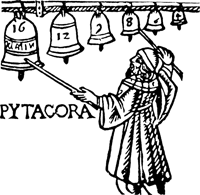
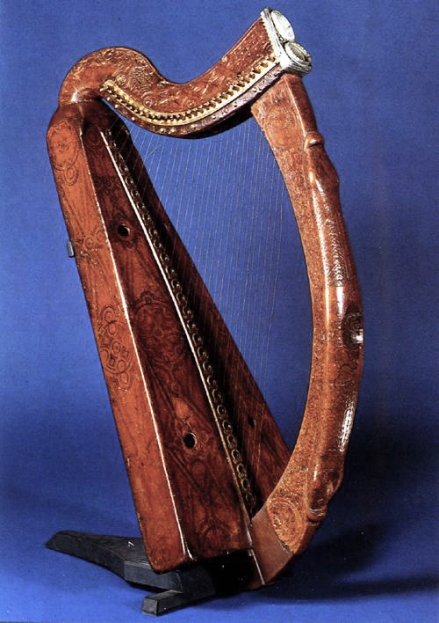

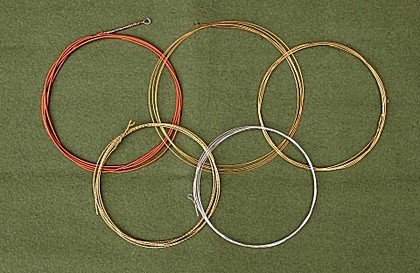
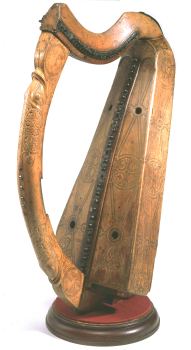
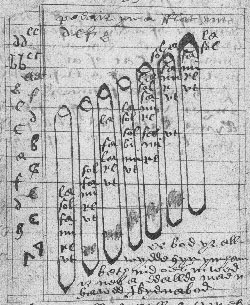


Pingback: Text, Rhythm, Action! Research, Training & Performance | Andrew Lawrence-King